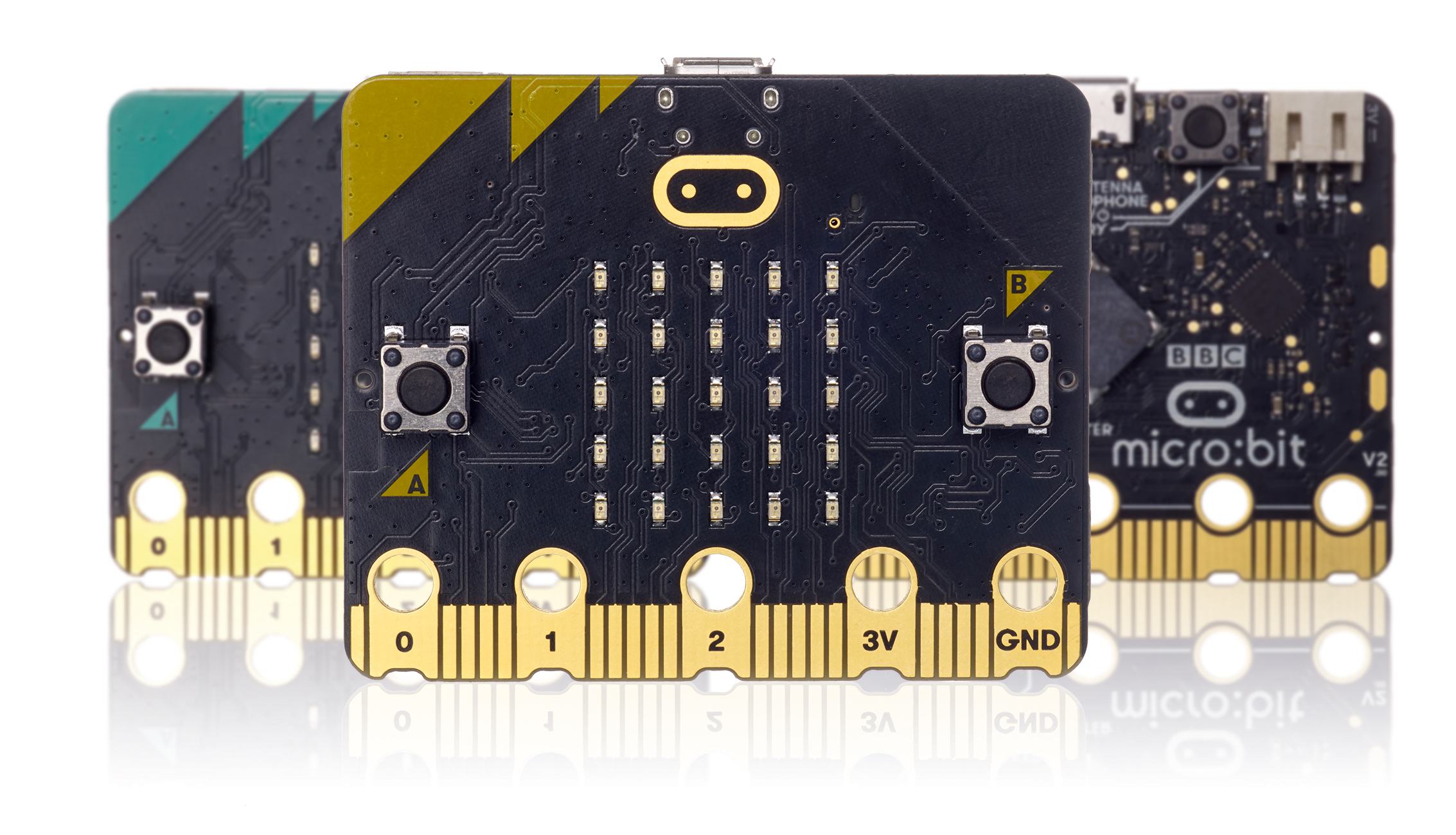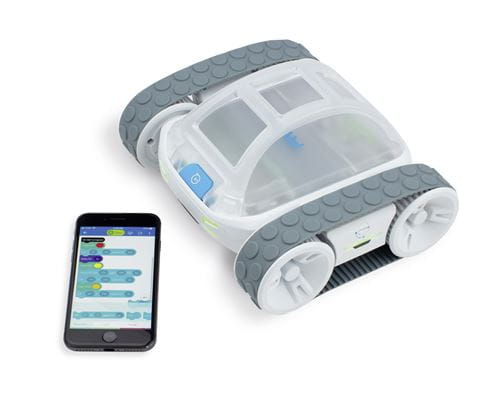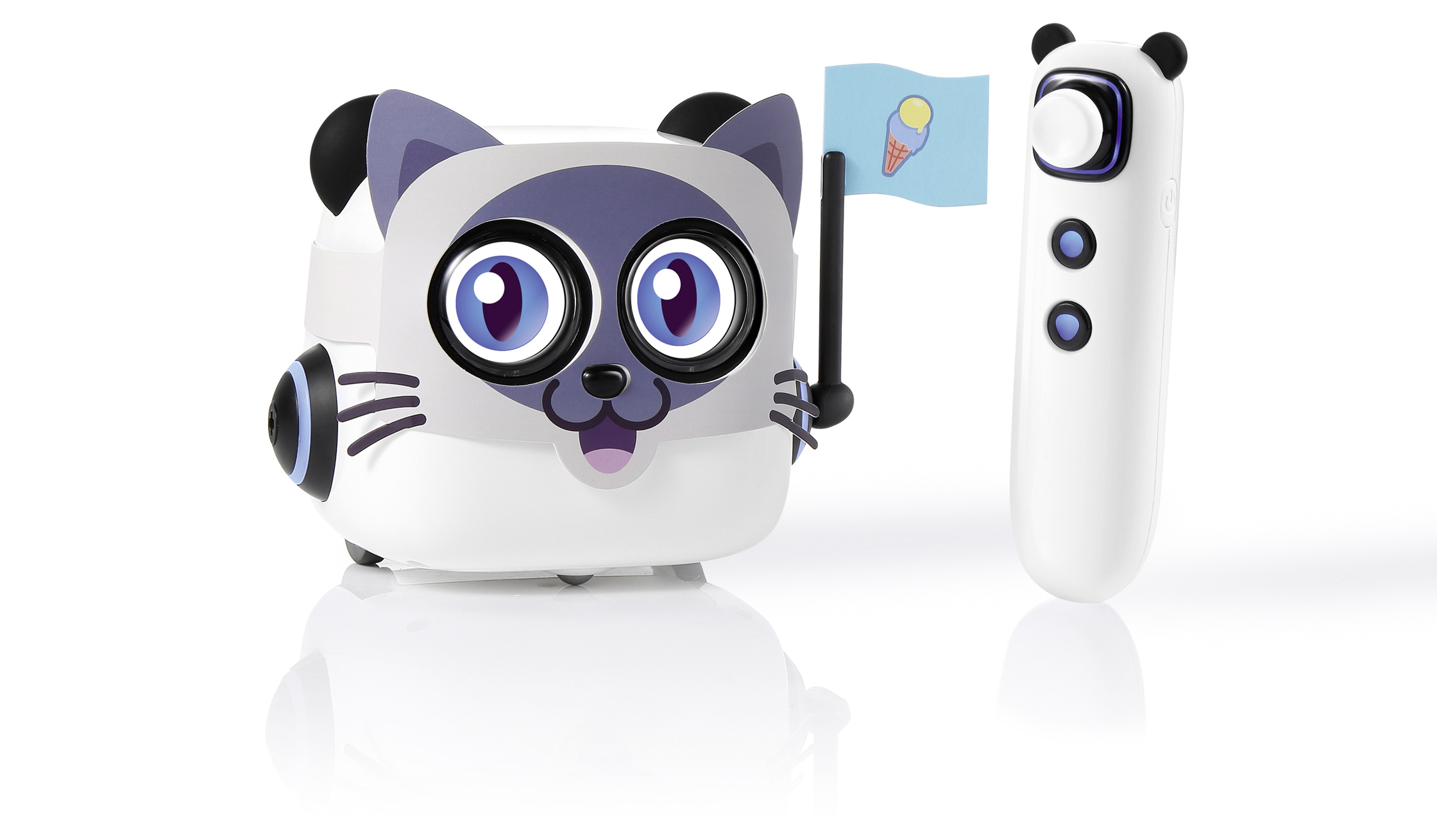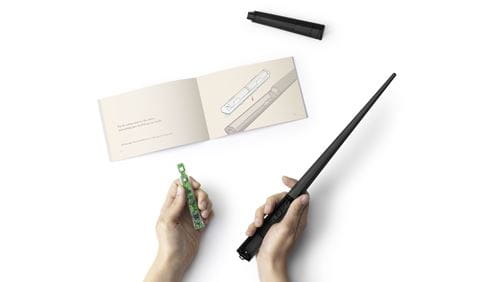Full Steam Ahead
Wireless educational tools and technologies are helping children develop essential STEAM skills
What do the coders, engineers, entrepreneurs and innovators of tomorrow need to begin building their skills and experience? It’s a question many ‘STEAM’ (science, technology, engineering, the arts, and mathematics) experts, as well as educational device manufacturers, are attempting to answer with wireless educational tools and technologies.
The challenge involves introducing a new generation of digital pioneers to the world of hands on Information & Communication Technology (ICT) and computer science, helping children develop computational and critical thinking, and encouraging young learners to be not only safe and savvy technology users, but active participants in future technologies.
According to the experts, these objectives are crucial on at least two fronts. First, to help as many children as possible obtain the interdisciplinary education they will need to reach their full potential as industry becomes increasingly reliant on technology. And second, to ensure a highly educated, knowledgeable and creative future workforce will continue to advance individual industries, and society as a whole.
In recent times, wireless tech has become important in the creation of STEAM education tools and platforms. In turn, these new applications are being wholeheartedly embraced by education providers, schools, teachers, parents and various organizations. Most importantly, young people themselves are excited by the possibilities. Human participants might currently be keeping a safe distance from each other, but more than ever the fields of education and technology are working side by side.
Micro:bit goes global
In March 2016, the British Broadcasting Corporation (BBC) delivered one million Nordic-powered micro:bits—tiny yet powerful programmable pocket computers—to Year 7 school students across U.K. schools. Just over four years later, adoption is tracking impressively. Around 4.5 million units are now in circulation and an estimated 20 million children have learned digital skills using the device.

The new micro:bit
Today micro:bits are available in over 60 countries including Denmark, Finland, Uruguay, Singapore, Canada and Bangladesh. New programs and pilots have recently been launched in The Gambia with Rotary International, and Colombia working with the Colombian government and British Council. The micro:bit is central to over 30 large scale national and regional projects led by, for example, national broadcasters or NGOs. Moreover, according to the Micro:bit Educational Foundation, the micro:bit is making a positive impact on global education systems and strongly influencing STEAM education platforms and other worthwhile programs around the world.
For example, the Ultra:bit program, launched by the Danish Broadcasting Corporation (DR) in 2018, saw the micro:bit incorporated into popular fiction and technology-focused content. The program has reached 90 percent of schools and over 70,000 students in Denmark.
An August 2018 study by the Danish Center for Evaluation and Development of Science Education (NEUC) surveyed 330 teachers, of which 95 percent felt that Danish Year 4 (age 8-9) students found it easier to code after working with the micro:bits, while 96 percent thought students wanted to learn more about coding and technology since using the devices. Dr Grit Dørup Lund, a teacher implementing the micro:bit at a school in Gammelgaardsskolen, said her Grade 4 students are learning about technology with an open mind: “They get super inspired. They don’t have any barriers to learning how to program as we adults have. They just do it.” Meanwhile, the not-for-profit Micro:bit Educational Foundation is continuing to grow and has just manufactured its five millionth micro:bit.
“We have also given away 5,000 micro:bits to parents in the UK to help them home educate their children during the COVID-19 lockdown and released resources to help those with or without micro:bits to start their journey with technology and digital creativity at home,” says Gareth Stockdale, CEO of the Foundation.
Recently the Foundation announced the winners of its “do your:bit” BBC micro:bit challenge for children and teens to combine creativity and technology in solutions designed to tackle the United Nations’ ‘Global Goals’ for sustainable development. The initiative focused on finding innovative ways to use the micro:bit to help protect life on land and underwater.
“The benefits of using physical computing to solve problems is shown in our recent do your:bit challenge where children from around the globe created solutions using the micro:bit,” explains Stockdale. “Our North America winner, Lynn, created a complex device as a solution towards Global Goal 15, Life on Land. With this creation, Lynn aims to solve the issue of deforestation.”
To detect loud sounds in forests, Lynn used a Raspberry Pi—a low cost, credit card-sized computer that plugs into a monitor or TV and uses a standard keyboard and mouse— and a connected microphone and camera. The microphone communicates with a micro:bit which then relays a signal to the Raspberry Pi when a sound has been detected. The system then automatically takes a photo and posts it to a public Twitter account for a park ranger to review, and to raise awareness of the challenge of deforestation.
Smart robotics and coding
In addition to well established educational smart devices like the micro:bit and Raspberry Pi, other wireless tech- based solutions are helping children around the world develop valuable STEAM education skills in different ways. Smart robots, for example, are encouraging kids to take a genuine interest in coding, programming and development, while building practical skills and having fun in the process.
One such example is Sphero RVR, an all-terrain programmable and customizable robot developed by Boulder, CO-based consumer robotics and toy company, Sphero. The device is suitable for beginners to advanced coders along with STEAM educators and students. It features a diverse suite of sensors enabling the robot to interact with its environment including an ambient light, color, infrared, accelerometer and gyroscope. Using Nordic SoC-enabled Bluetooth LE connectivity, users can wirelessly code RVR from the Sphero Edu app on a smartphone or tablet as well as via macOS, Windows, Chrome OS and Fire OS devices. The companion app is a hub for programming Sphero robots and creating STEAM activities, alternatively, RVR can be coded using a Raspberry Pi, Arduino, a micro:bit or the company’s own ‘littleBits’ platform. “For beginners looking to grow, RVR is the perfect coding robot because of its unique ability to expand and change based on the user’s growing skill level,” says Jeff Wiencrot, Director of Firmware & Hardware at Sphero. According to Wiencrot, smart robotics and coding platforms can help pave the way to universally improved STEAM education and skills for the next generation of professionals and experts.

Sphero RVR uses Bluetooth LE to provide flexible, interactive, user-friendly wireless coding and programming
“Educators are looking for ways to teach the ‘4 Cs’ of critical thinking, collaboration, communication and creativity to help better prepare their students for the future as well as teach those 21st century skills alongside core content such as mathematics, science, language and the arts,” he says.
“Educators are seeing the value of robotics, as students work in teams to creatively solve problems and demonstrate these solutions through the robot itself. More than any computer program, robots bring code to life and can help support themes and topics that are currently being taught in the classroom. We’ll start to see this emerge as companies, like Sphero, create curriculums that can be used in your traditional classrooms to support teachers in integrating robotics and coding.”
Still in the smart robot space, the mTiny by global STEAM education solution provider, Makeblock, brings something different to the table. Combining the connected robot with a tap pen controller and interactive map, mTiny is a screen-free smart education robot platform designed to help children aged four and older learn basic coding principles, as well as engage multiple senses, develop logical thinking and interactively solve problems through language, math and music. Both the tap pen controller and the robot feature optical identification, a six-axis gyroscope and the Nordic nRF52832 SoC, enabling the pen to wirelessly send commands to the robot using Bluetooth LE connectivity, up to a range of approximately ten meters in open areas.

The Makeblock mTiny is designed to help children aged four and older learn basic coding principles
“At Makeblock we consider it our company mission to promote STEAM education skills. Our business idea supports this vision ... so that we can help people turn their ideas into reality and take education to the next level,” says Makeblock’s Product Manager.
Kano, a London, UK-based educational technology company, also employs the nRF52832 SoC for its Harry Potter Kano Coding Kit, a Bluetooth LE wand that helps people of all ages learn how to code. The Nordic SoC wirelessly connects the ‘magic’ wand with the multiplatform Kano app where users can follow 70 step-by-step coding challenges and creations using intuitive coding ‘blocks’ and a JavaScript inspector. Once the wand is paired with a tablet, laptop or desktop computer, makers can bring their coding creations to life and view the wand movements onscreen, for example, moving floating feathers, growing pumpkins or throwing flames - all inspired by the Harry Potter films and books.

Children are encouraged to put the Harry Potter Kano Coding Kit wand together before using it to drive the onscreen experience
The wand employs a nine-degrees-of-freedom (9DoF) IMU—including a three-axis accelerometer, three-axis gyroscope and three-axis magnetometer—that tracks the wand’s movement, speed and direction of use. “We wanted to capture movement on every axis so our makers have a more immersive experience and the gesture recognition featured in our app can make use of more data,” says Ricardo Luz, Senior Technical Product Manager at Kano.
The power of wireless
The Sphero RVR, Makeblock mTiny and Harry Potter Kano Coding Kit each offer their own unique STEAM education benefits, but from a technical perspective all three solutions are connected by a common feature - low latency Bluetooth LE connectivity enabling flexible, interactive, user-friendly wireless coding and programming.
This functionality plays a key role in engaging younger users and ensuring the platforms are both educational and enjoyable. Without the component of wireless connectivity, such devices would lose their impact.
“A positive user experience of the Harry Potter Kano Coding Kit relies on the ability to achieve a ‘first time, every time’ connection between the hardware and the Kano App,” Luz explains. “We wanted to bypass a complex initial set-up, and thanks to Nordic’s [software architecture] we were able to implement a seamless and rapid connection between the kit’s hardware and the app.” Beyond Bluetooth LE wireless connectivity, the integration of Nordic technology is also crucial in terms of core processing and battery life capabilities for these smart education devices.
How do we build advanced STEAM education into fluid, dynamic and relevant everyday learning environments? According to educators it’s all about providing a connection between abstract ideas and real world outcomes.
The final word goes to Stockdale: “We think it is really important that children learn to create and solve problems using technology,” he says. “If we can provide the developers and engineers of the future the tools to follow their passion, then it’s a future we can look forward to.”